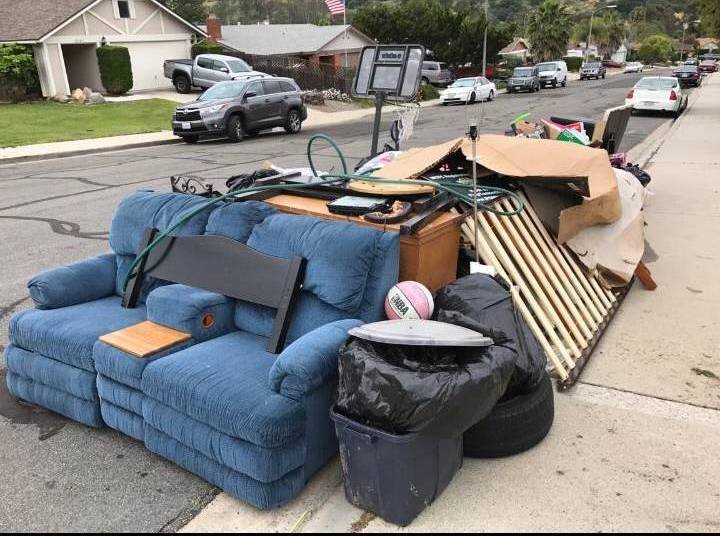Cost Effective Construction Debris Removal Atlanta: Get Rid of Waste Quick
Cost Effective Construction Debris Removal Atlanta: Get Rid of Waste Quick
Blog Article
Professional Waste Management Strategies Tailored for Industrial Settings
Tailoring waste management strategies to fit the unique requirements of industrial settings is not simply beneficial however vital for maintaining operational performance and ecological sustainability. The quest for enhanced waste management in industrial setups includes a careful technique that stabilizes regulatory conformity, cost-effectiveness, and eco-friendly obligation.
Importance of Tailored Waste Monitoring
Tailored waste administration techniques are vital in industrial settings to maximize resource use and decrease ecological influence. Industrial procedures create a substantial quantity of waste, ranging from solid by-products to chemical toxins, presenting a hazard to the environment otherwise taken care of effectively (Commercial junk removal atlanta). By personalizing waste administration approaches to fit the particular demands and challenges of each industrial facility, business can not just conform with laws yet also boost functional effectiveness and sustainability
One trick element of tailored waste monitoring is conducting an extensive waste analysis to identify the types and volumes of waste created. This analysis enables business to execute targeted solutions such as reusing programs, waste segregation procedures, and waste-to-energy initiatives. By recognizing the structure of their waste streams, industrial facilities can develop cost-effective approaches to minimize waste generation at the source, bring about long-lasting ecological benefits.

Kinds Of Hazardous Waste
What are the various classifications of hazardous waste typically generated in making procedures? Industrial waste can be categorized right into a number of primary groups based upon its composition and attributes. Contaminated materials is one of the most critical types, including chemicals, solvents, hefty metals, and various other products that pose a threat to human health or the setting. This classification usually requires special delivery and disposal methods to stop contamination and make sure security.
An additional typical type of hazardous waste is non-hazardous waste, which encompasses products like paper, plastics, and packaging waste. While non-hazardous waste may not posture prompt threats, correct monitoring is still important to minimize garbage dump use and promote recycling and sustainability techniques.

Hazardous Waste Handling Treatments
Efficient administration of contaminated materials in commercial setups demands stringent adherence to developed managing procedures to alleviate dangers and ensure environmental safety. Unsafe waste handling treatments involve a number of key actions to decrease the possible effect on human health and the setting. Proper identification and classification of hazardous waste are crucial. This includes establishing the qualities of the waste to identify the appropriate handling, storage space, and disposal approaches.
Secondly, once identified, unsafe waste needs to be meticulously segregated from non-hazardous waste to avoid contamination and make sure appropriate treatment. Storage of contaminated materials need to abide with policies relating to control, labeling, and compatibility to prevent leakages, spills, or various other events that might threaten workers or the setting.
Moreover, taking care of procedures should consist of using individual protective devices, worker training, and emergency action methods. Regular evaluations, tracking, and documents of contaminated materials handling tasks are vital to keeping conformity and determining areas for improvement. By complying with these structured procedures faithfully, commercial facilities can efficiently manage contaminated materials and maintain their commitment to environmental stewardship.
Executing Efficient Reusing Practices

To apply reliable reusing methods, industrial facilities must initially perform a waste audit to recognize the types and quantities of recyclable products generated in their procedures. Based on this audit, firms can then establish marked recycling stations, supply appropriate training to employees on correct sorting techniques, and team up with trusted recycling partners for the collection and handling of materials. In addition, setting certain reusing objectives, tracking progression, and routinely interacting with team about the value of reusing are necessary actions to guarantee the success and sustainability of reusing efforts in commercial settings.
Monitoring and Continuous Improvement
To make sure the effectiveness and sustainability of waste monitoring methods in industrial settings, the execution of durable surveillance and continual enhancement procedures is vital. Surveillance includes monitoring crucial efficiency signs (KPIs) such as waste generation prices, reusing percentages, and disposal costs. Routinely analyzing these metrics permits services to recognize locations for renovation and gauge the success of carried out waste monitoring campaigns.
Continuous improvement is crucial for fine-tuning processes gradually. It involves analyzing monitoring information, identifying inadequacies, and implementing adjustments to enhance waste monitoring practices even more. This iterative method promotes a culture of continuous enhancement and technology within the company.
Utilizing technology like waste tracking software program and IoT sensing units can simplify keeping track of efforts, supplying real-time information for educated decision-making. Staff member training and engagement also play an essential role in ensuring the success of tracking and continual enhancement campaigns, as frontline staff are often principals in waste management processes.
Final Thought
To conclude, tailored waste administration approaches are vital for g grace junk removal industrial settings to effectively handle various kinds of waste, consisting of harmful products. By applying effective reusing methods and continually surveillance and enhancing waste monitoring procedures, markets can lessen their ecological influence and guarantee compliance with laws. It is important for firms to focus on waste management to protect the atmosphere and advertise sustainability in their procedures.
Report this page